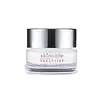What's inside
What's inside
 Key Ingredients
Key Ingredients

 Benefits
Benefits

 Concerns
Concerns

 Ingredients Side-by-side
Ingredients Side-by-side

Water
Skin ConditioningButylene Glycol
HumectantGlyceryl Stearate
EmollientNylon-12
PEG-100 Stearate
Glycerin
HumectantSimmondsia Chinensis Seed Oil
EmollientSqualane
EmollientDicaprylyl Ether
EmollientBehenyl Alcohol
EmollientHelianthus Annuus Seed Oil
EmollientOctyldodecanol
EmollientPalmitoyl Dipeptide-5 Diaminobutyroyl Hydroxythreonine
Skin ConditioningPalmitoyl Dipeptide-5 Diaminohydroxybutyrate
Skin ConditioningPhytosterols
Skin ConditioningPolysorbate 80
EmulsifyingGlycine Soja Oil
EmollientGlycolic Acid
BufferingCaffeine
Skin ConditioningNiacinamide
SmoothingFraxinus Excelsior Bark Extract
Skin ConditioningTocopherol
AntioxidantButyrospermum Parkii Butter Extract
Skin ConditioningSucrose Polystearate
EmollientCarbomer
Emulsion StabilisingLimnanthes Alba Seed Oil
Skin ConditioningXylitylglucoside
HumectantEthylhexylglycerin
Skin ConditioningPanthenol
Skin ConditioningAnhydroxylitol
HumectantSodium Hydroxide
BufferingHydrogenated Polyisobutene
EmollientDisodium EDTA
Xylitol
HumectantGlucose
HumectantParfum
MaskingAlcohol
AntimicrobialSilanetriol
Lecithin
EmollientSoy Isoflavones
Skin ConditioningPhenoxyethanol
PreservativeWater, Butylene Glycol, Glyceryl Stearate, Nylon-12, PEG-100 Stearate, Glycerin, Simmondsia Chinensis Seed Oil, Squalane, Dicaprylyl Ether, Behenyl Alcohol, Helianthus Annuus Seed Oil, Octyldodecanol, Palmitoyl Dipeptide-5 Diaminobutyroyl Hydroxythreonine, Palmitoyl Dipeptide-5 Diaminohydroxybutyrate, Phytosterols, Polysorbate 80, Glycine Soja Oil, Glycolic Acid, Caffeine, Niacinamide, Fraxinus Excelsior Bark Extract, Tocopherol, Butyrospermum Parkii Butter Extract, Sucrose Polystearate, Carbomer, Limnanthes Alba Seed Oil, Xylitylglucoside, Ethylhexylglycerin, Panthenol, Anhydroxylitol, Sodium Hydroxide, Hydrogenated Polyisobutene, Disodium EDTA, Xylitol, Glucose, Parfum, Alcohol, Silanetriol, Lecithin, Soy Isoflavones, Phenoxyethanol
Water
Skin ConditioningParaffinum Liquidum
EmollientButylene Glycol
HumectantPolysorbate 40
EmulsifyingSqualane
EmollientCaprylic/Capric Triglyceride
MaskingSorbitan Palmitate
Emulsifying1,2-Hexanediol
Skin ConditioningBHT
AntioxidantCaprylyl Glycol
EmollientCarbomer
Emulsion StabilisingDisodium EDTA
Oleoyl Dipeptide-15
Skin ConditioningOleoyl Tetrapeptide-31
AntioxidantCI 17200
Cosmetic ColorantRetinal
Skin ConditioningSodium Hydroxide
BufferingTocopheryl Glucoside
EmollientXanthan Gum
EmulsifyingAlternatives
Ingredients Explained
These ingredients are found in both products.
Ingredients higher up in an ingredient list are typically present in a larger amount.
Butylene Glycol (or BG) is used within cosmetic products for a few different reasons:
Overall, Butylene Glycol is a safe and well-rounded ingredient that works well with other ingredients.
Though this ingredient works well with most skin types, some people with sensitive skin may experience a reaction such as allergic rashes, closed comedones, or itchiness.
Learn more about Butylene GlycolCarbomer is a polymer of acrylic acid. Its main role is to create a gel consistency.
A high amount of carbomer can cause pilling or balling up of products. Don't worry, most products contain 1% or less of carbomer.
Disodium EDTA plays a role in making products more stable by aiding other preservatives.
It is a chelating agent, meaning it neutralizes metal ions that may be found in a product.
Disodium EDTA is a salt of edetic acid and is found to be safe in cosmetic ingredients.
Learn more about Disodium EDTASodium Hydroxide is also known as lye or caustic soda. It is used to adjust the pH of products; many ingredients require a specific pH to be effective.
In small amounts, sodium hydroxide is considered safe to use. However, large amounts may cause chemical burns due to its high alkaline.
Your skin has a natural pH and acid mantle. This acid mantle helps prevent harmful bacteria from breaking through. The acid mantle also helps keep your skin hydrated.
"Alkaline" refers to a high pH level. A low pH level would be considered acidic.
Learn more about Sodium HydroxideSqualane is an emollient that helps the skin hold onto moisture. It's an oily liquid that occurs naturally in certain types of fish and plant oils.
Because squalane boosts hydration in the skin, it also comes with plenty of benefits: it is an antioxidant and can help fight free radicals and skin damage. Squalane is also found to have a detoxifying effect when applied.
Squalane comes from squalene, which occurs naturally within the sebum of our skin. It is one of the oils our skin produces to keep itself hydrated. Squalane is the hydrogenated version of squalene and has a longer shelf life.
Research shows that squalane is non-irritating (even at 100% concentration).
In general, it's a fantastic ingredient. It does a great job at hydrating the skin, and it's suitable for those with sensitive skin.
The source of squalane may impact malassezia / fungal acne. This is because olive oil derived squalane can contain impurities such as fatty acids and plant waxes. Sugarcane derived squalane is recommended for anyone with malassezia concerns.
Is squalane vegan?
This depends on the source. Squalane can be derived from both plants and animals. Most squalane used in skincare comes from plants.
Please note: the source of squalane is only known if disclosed by the brand. We recommend reaching out to the brand if you have any questions about their squalane.
Read more about squalene with an "e".
Is squalane an oil?
Squalane is often called an oil, but it’s technically not; it’s a hydrocarbon, meaning it’s only made of carbon and hydrogen, unlike true oils which are triglycerides made of fatty acids and glycerol.
The term “oil-free” isn’t regulated, so companies can define it however they want. Some exclude all oils, while others just avoid mineral oil or comedogenic oils.
While some people avoid oils thinking they cause breakouts, the right kind of oil (or oil-like ingredient like squalane) can actually help balance and hydrate your skin. It’s worth testing out simple oils or squalane to see what works best for your skin.
Learn more about SqualaneWater. It's the most common cosmetic ingredient of all. You'll usually see it at the top of ingredient lists, meaning that it makes up the largest part of the product.
So why is it so popular? Water most often acts as a solvent - this means that it helps dissolve other ingredients into the formulation.
You'll also recognize water as that liquid we all need to stay alive. If you see this, drink a glass of water. Stay hydrated!
Learn more about Water